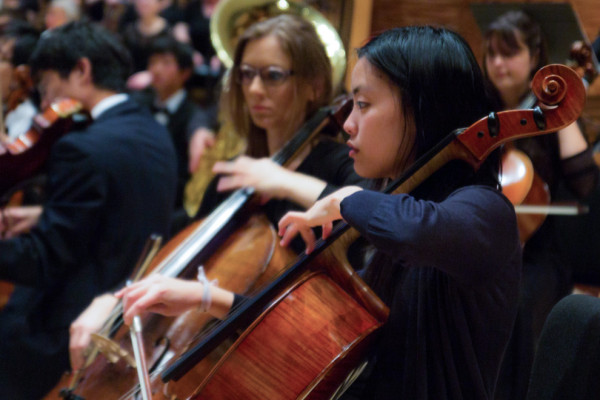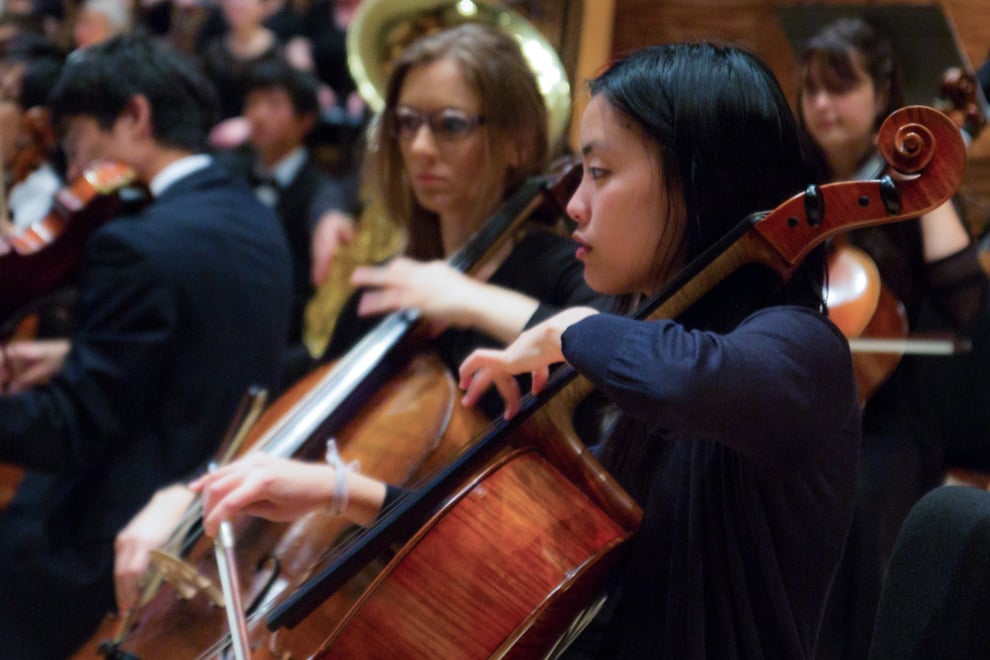
This past Saturday, the Stanford Symphony Orchestra (SSO) and the Stanford Symphonic Chorus (SSC) invited their audience to experience Germany during the time of Johannes Brahm. The sold-out concert featured Brahms’ “Academic festival Overture” and “A German Requiem,” with soloists Nancy Wait-Kromm and Kenneth Goodson for the overture. It was a treat to see Stephan M. Sano, professor and chair of the Stanford music department, lead the ensemble with both precision and expressivity.
Sano has conducted with some of the world’s leading choral organizations as well as taught master classes worldwide. In addition to his work with the Stanford chorus, Sano is a skilled at Hawaiian-style of guitar, and his recordings were on the preliminary ballot for the 2008 Grammy Awards.
A former Stanford teaching fellow, Kromm is now a part of the Santa Clara University music faculty. She has since performed with award-winning orchestras, including the San Francisco Symphony, as well as sung at a number of world premieres. Her fellow soloist Goodson is also familiar with the Stanford campus, as he is the Robert Bosch Chairman of the Mechanical Engineering Department and the Davies Family Provostial Professor. Both soloists worked together to create a night of music with their parts in the second half of the concert.
The opening work, Brahms’ overture, was written as a “thank-you” to Beslau University for awarding him an honorary doctorate. SSO captured the mood from the start with a mysterious motif in the strings; this accompaniment was perfectly balanced with solos from the wind section, allowing soloists to be heard clearly while still maintaining the soft dynamic.
The ensemble’s technical brilliance only grew more apparent as Sano led the group, creating joyous crescendos and lyrical, expressive melodies. In a fitting conclusion, SSO blazed cleanly through the three final, ringing chords of the work – the sound hovered in the air long after the last musician had lifted his bow.
Sano conducted both pieces with clean, fluid movements, expressing intensity through the speed of his baton rather than through grand movements. He also demonstrated an exceptional sensitivity to the two soloists of the night, masterfully keeping the orchestra and chorus in time with both Kromm and Goodson in their respective movements.
“A German Requiem” is Brahms’ longest piece, comprised of seven movements for orchestra, two vocal soloists and a chorus; Brahms himself assembled the German text to be sung. Requiems were initially to be performed during service, chanted for the peace of deceased loved ones. As noted in the concert program, Brahms chose to focus “not so much [on] the judgement of the dead… [but] the comfort of the living” with this requiem. The SSO, SSC and soloists certainly captured this uplifting mood in their gentle crescendos and almost tender melodies during the first movement.
Goodson delivered a very powerful performance in what was the most exciting movement of the night, movement six. He sang without music, not breaking eye contact with the audience as he created an authoritative presence on stage. The orchestra and chorus only added to the building drama, as the normally lyrical chorus strove instead to mimic the detached pizzicato style of the orchestra. The almost ominous tone of movement six eventually shifted into that of a celebration, uplifting the audience before the performers gently set them down with the stately concluding movement. The SSO, SSC and soloists truly captured Brahms’ intellectual complexity and musical prowess with their performance.
Contact Serena Wong at serenaw ‘at’ stanford.edu.
